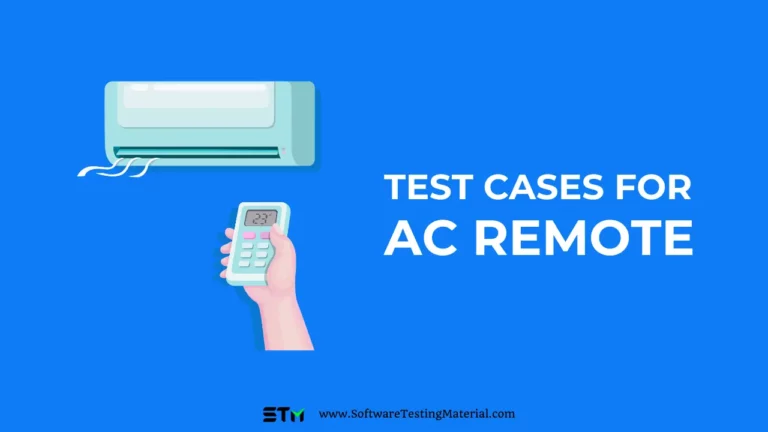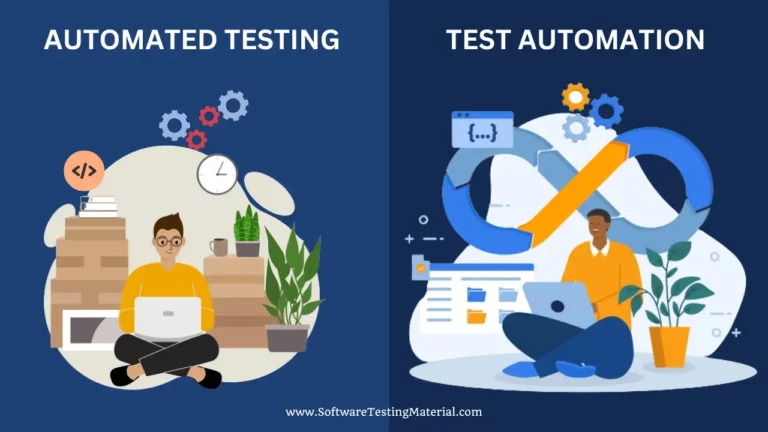Sample Test Cases For Lift
In this article, we are going to discuss the answer to the interview question “Write some test cases for lift”. It is one of the common manual testing interview questions.
The interviewer is hiring you for a QA team, not as a lift engineer, so they don’t expect you to be technical. Instead, they want to know how to think, your thought process and how much you are familiar with the testing concepts.
Earlier we have discussed some of the related posts and here are those for your reference.
- Test Case Template with Detailed Explanation
- Test Cases for Registration Page
- Test Cases for Login Page
- Test Cases for Gmail
- Test Cases for ATM Machine
- Test Scenario vs Test Case
- Test Strategy vs Test Plan
- 8 Types of Test Cases To Be Automated
- 8 Types of Test Cases Not To Be Automated

Requirements
When the interviewer asks such a question the candidate tries to answer the question with certain assumptions without understanding the context. This is also one of the common mistakes made by several QA engineers where they assume a certain behaviour rather than trying to understand the requirements better.
Let’s say that the candidate assumes the lift is a normal residential elevator. Then the interviewer reveals that it’s goods lift. Or what if the assumed lift was to be on the side of a mountain and servicing a small community? Else the lift might be used in a car showroom and it was to move the cars between floors? There are so many possibilities in which a lift might be used.
We can ask the below questions to understand the requirements better:
- Are we testing a single lift or multiple lifts?
- What type of lift are we testing, is it a passenger lift, goods lift, service lift, express lift for VIPs, Ski lift or any other type of lift?
- To whom does the lift cater, is it for passengers or goods?
- Where would the lift be installed, is it going to be installed in a resort, mall, apartment or private residence?
- How many floors will the lift intend to service?
- What country is the lift intended to be installed in, whether the safety instructions is given in the language of the target users?
- What is the capacity of the lift?
- What are the health and safety or regulatory requirements that the lift needs to fulfill?
- What are the weather conditions the lift has to deal with?
Thought Process
Whenever you think about testing an application or any product, you should drill it down to its basic functions.
- Basic functionality: The lift should transport the user to their desired floor.
- Boundary conditions: The lift should move to the topmost floor and the bottommost floor.
- Stress Condition: Overloading the capacity of the lift i.e more users should get in the lift above the suggested limit.
- Safety conditions: The lift should have power backup when the power shutdown.
Basic Functional Test Cases For Lift
- Check whether the lift can move up and down
- Check whether the lift moves to the corresponding floor as the button of the floor is clicked
- Check whether the lift has buttons outside to stop the lift by pressing the direction indicator button.
- Check whether the lift stops at that current floor when up/down buttons at a particular floor are pressed outside the lift.
- Check whether the door opens in the lift when the selected floor arrives.
- Check whether the door closes when the desired floor is selected.
- Check whether the emergency button works
- Check whether the functionality of other buttons like – Fan, Light etc works as expected.
- Check whether the display indicates the current floor status of the lift.
- Check whether the lift doors can’t be opened when the lift is moving down or upward.
- Check whether the lift door opens when the user puts any object or body parts in between the lift doors when the door is about to close.
Usability Condition Test Cases
- Check whether the controls/buttons in the lift are self-explanatory.
- Check whether the controls/ buttons are accessible and usable by a blind person.
- Check whether the voice guide technology is working as expected.
- Check whether the control pad is comfortable to use
- Check whether the experience inside a lift makes the user uncomfortable due to gravitational pull
- Check whether the lift is making noise while moving up or down.
- Check whether the floor number is being announced on each floor
- Check whether the lift provides light and aroma along with some instrumental music.
- Check whether the lift interior has proper air ventilation.
- Check whether the light of the button gets on when the user presses it.
- Check whether the light colour gets changed when a user reaches the destination floor.
Boundary Conditions Test Cases
- Check the time taken by the lift to reach every floor
- Check how much time the lift taken from the top of the building to the ground floor
- Check how many people lift can take regardless of their weight
- Check the behaviour of the lift when it takes more people than capacity.
- Check how many runs the lift makes on power backup.
- Check whether the lift indicates some alert message weight exceeds from standard.
- Check whether the lift doesn’t move to any floor when no button is clicked in the control panel.
- Check whether the lift stops at each floor when all the floors are clicked in the control panel.
Performance Conditions Test Cases
- Check whether the time taken by the lift to move between two successive floors.
- Check whether the speed of the lift creates any discomfort to the users.
- Check how much time it takes for the lift to connect to the backup supply during power failure.
- Check the landing speed of the lift is as per requirement.
- Check the time duration for which doors remain open by default.
- Check whether the smoothness, comfort, and other aspects of the lift are as per requirement or not.
- Check whether users inside the lift are prompted with the current floor and direction information the lift is moving towards- audio/visual prompt
User Interface Conditions Test Cases
- Check whether the lift type is as per requirement, there are various types of lifts such as traction with a machine room, machine-room-less traction and hydraulic.
- To check whether the Physical appearance of the lift is as per the specifications, we have to check the Dimensions of the lift (Height and width).
- Check whether the metal type used in the lift both inside and outside is as per requirement.
- Check whether the total capacity of the lift is as per requirement.
- Check whether the total number of buttons inside the lift is as per requirement.
- Check whether the total number of buttons outside of the lift is as per requirement.
Safety Conditions Test Cases
- Check whether the STOP button causes the elevator to stop.
- Check whether the Pressing ALARM button reaches security within a specified amount of time.
- Check whether the elevator’s maximum weight capacity meets or exceeds specifications.
- Check the integrity of the pulley system
- Check the integrity of the braking system
- Check whether the lift door stays open and gives an alert message when placing any object near the door.
- Check whether the lift gives a. Alert message when adding one more person than the specific weight limit.
- Check the alert message when adding more people regarding the weight limit and verify the volume limitations.
- Check whether the alert message is indicated by creating smoke or fire inside the lift.
- Check whether the lift opens in the middle of movement when clicking on the open button
- Check whether the lift halted at the floor or free-fall in case of a power cut.
Positive Test Case For Lift
- Check whether the lift opens when you press the enter button from outside.
- Check the door opening and closing operation.
- Check the opening operation by waiting outside and verify whether the opening duration is as expected.
- Check the closing operation of the lift inside the lift without pressing the closing button and verify whether the closing duration is as expected.
- Check the closing operation of the lift inside the lift by pressing the closing button and verify whether the closing duration is as expected.
- Check whether the lift functions as usual even when there are power fluctuations or low voltage.
- Check the lift operates smoothly when a heavy load is in the lift.
- Check whether the lift stops at each floor when clicking multiple follows in the control panel.
- Check whether the floor gets deselected when clicking on the floor button twice.
- Check whether the lift moves to the nearest floor when two people are trying to access the lift from different floors.
Negative Test Case For Lift
- Check the behavior of the lift when the capacity of the lift exceeds.
- Check the behavior of the lift when there is smoke or fire inside the lift.
- Check the behavior by pressing the open button while the lift is moving.
- Check the behavior by pressing the stop button before reaching the specific floor.
- Check the behavior of the lift when the power shuts down
- Check the behavior of the lift when clicking on different floors randomly.
- Check the behavior of the lift when placing an object in the middle of the door.
Conclusion
Hope this article has provided the information that you require about test scenarios and the added benefit is that you’ll be able to answer for any product with this thought process.
Related posts:
- How To Write a Good Defect Report
- Why Did You Choose Software Testing As A Career
- Test Plan Template Detailed Explanation
- Web Cookie Testing – Test Cases of Cookie Testing







